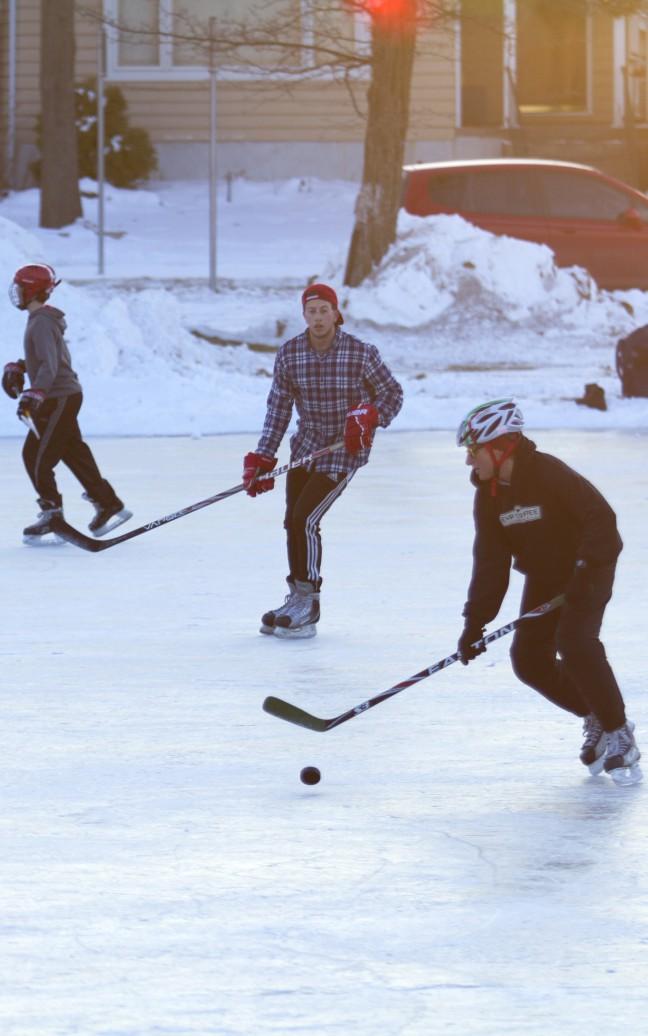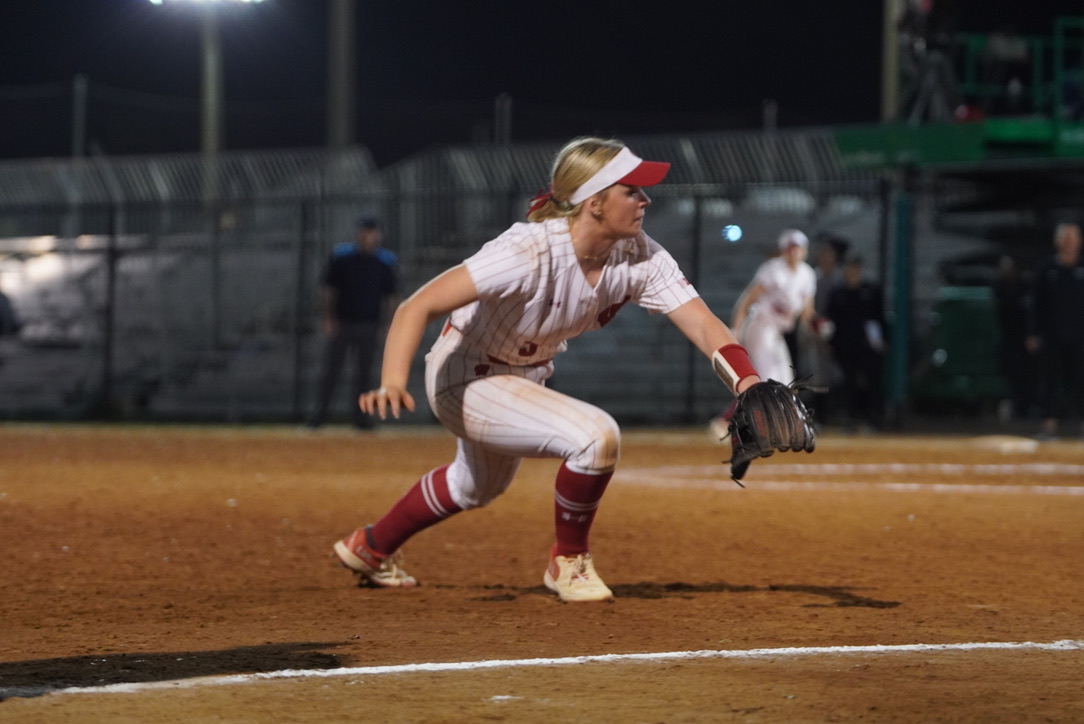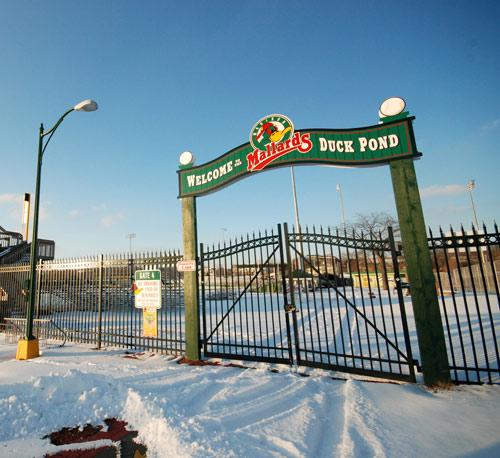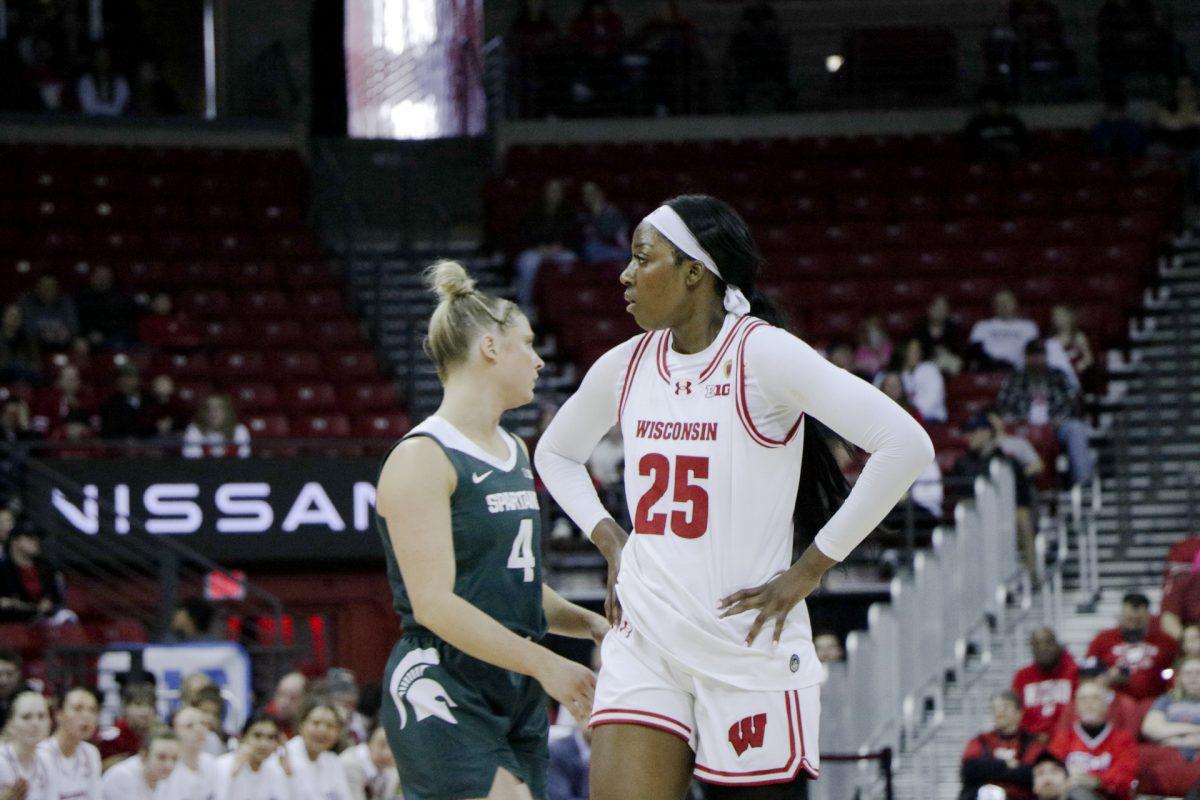As long as the wind isn’t howling, 10 degrees below zero doesn’t feel too bad. At least that’s the case in the eyes of Mark Johnson.
However, the all-time leading goal-scorer in University of Wisconsin men’s hockey history and the current head coach of the UW women’s hockey program has a little bit of experience in weathering the elements.
Johnson spent the first eight years of his life in Minneapolis and Colorado Springs, Colorado, where his dad, Bob Johnson, coached Colorado College for three years. But the bulk of his childhood was spent in Madison, much of which was on the ice.
The hockey landscape in Madison was much different in the late 1960s and early 70s than it is now, and Johnson, like most others, played a good deal of his hockey outdoors. City and state tournaments were held outside in his peewee and bantam years, and even in high school at Madison Memorial, Johnson and his teammates would practice outdoors at Hill Farms Park in Madison.
It wasn’t necessarily a matter of choice, it was just that a bulk of the opportunity for hockey presented itself outside.
“They had Hartmeyer [park] and then in the early 70s [Madison Ice Arena] was built, but there weren’t a lot of indoor rinks. Whether it was Hill Farms, whether it was Vilas, Tenney, some of the outdoor rinks that still exist — we not only practiced there, we used to play games there,” Johnson said. “But that was just because we didn’t have enough [indoor rinks]. So if you wanted to skate, you had some indoor ice, but you had a better chance of skating outside than inside.”
Since then, the number of indoor facilities has dramatically increased in Madison, with nearly every outlying community around it supporting its own indoor ice arena. The indoor ice sheets can provide more than enough ice time for the organized game of hockey, taking the outdoor rinks once relied upon for practices and games essentially out of the equation.
In the last decade, the City of Madison has maintained approximately a half-dozen of outdoor rinks at parks, four of which remain popular, according to Parks Operation Manager Charlie Romines.
The frigid weather throughout much of last winter, which led to superb ice maintenance conditions for the city’s crews, certainly helped contribute to the popularity, Romines said.
“Last winter was as close as you’re going to get here,” Romines said of the near-perfect situation last year’s prolonged winter provided. “When you’re getting weeks and weeks and weeks where it never gets above freezing, we had ice really tight last winter. We just had a lot of time to groom ice. I might work here 20 more years and never have as good of conditions as we had last year.”
Those weeks below freezing last winter, which resulted in the pristine ice conditions, meant Vilas Park near the south side of the UW campus, or Tenney Park just northeast of campus on East Johnson Street, played home to some form of a hockey game. Unlike one of Johnson’s practices with Madison Memorial in the early 1970s, the hockey being played might not be the most organized. But it’s still hockey.
Without a lot of the distractions, the game is arguably a little purer, closer to its original roots, Johnson said.
“The game becomes shinny hockey,” Johnson said. “When you don’t have referees and you don’t have parents watching, you can just have fun and enjoy the game.”
The only parental or referee-like figure getting in the way of playing time during an outdoor pick-up game is the the weather.
After a nearly seamless winter season a year ago, the beginning of the season this year looked to be right on par, if not better, at the start of December. But nearly two weeks of straight of above freezing temperatures and rain halted any progress and ultimately put the ice maintenance crews behind schedule. Instead of opening the rinks to the public around Christmas Day, typically the goal every year, some of the crew members resorted to pulling seaweed out of the ice instead.
It’s tough to tell if global climate change has had an effect on the winters recently, but Romines believes it’s simply the sporadic nature of the weather.
“I don’t think from our standpoint in parks that we would say we’ve noticed a dramatic difference one way or the other. They weather varies and the last two [winters] have been long and cold,” Romines said of the winters of 2012-13 and 2013-14. “The one before that was warm and short.”
However, as UW atmospheric and oceanic professor Jonathon Martin explained, the global climate change may not always manifest itself in warmer temperatures, which allows for winters like last year despite a general warming trend.
The last two winters and their excess of colder weather have benefitted from the weather phenomenon known as the polar vortex. According to Martin, this relatively random event involves parts of the cold air that typically circulate around the North Pole to relocate south over parts of the Northern Hemisphere.
Luckily for the city of Madison and the ice rinks, that cold air found its way over south central Wisconsin during last winter and for parts of this year’s.
But the warmer weather might become more the norm.
“I would say quite confidently that the winter 50 years from now in Madison will not look the same as the winter does now, given that there will be year-to-year variability in that depiction,” Martin said. “It will be shorter and warmer.”
According to data from the Atmospheric and Oceanic Sciences department on the ice duration on Lake Mendota, from 1855 until 1950, there were only six years where the ice was on the lake for less than 90 days. Since 2000, there have already been seven years where the ice duration has fallen below 90 days, including a low of 21 days in 2001-02.
Although warmer temperatures can be tolerated for the ice-making process to a certain degree, when the thermometer climbs too high or for too long, the end product can be affected drastically.
“While we all appreciate the break from freezing cold temperatures, it throws a monkey wrench into things for trying to get things up and running,” Romines said. “People still want to come out, but if you let them out, you skate it up and really muck it. Then you’re trying to close rinks and put Humpty Dumpty back together when it gets cold again.”
Thankfully, that process of trying to put everything back together this year came at an opportune time for the ice crews this year, bolstered by sub-zero temperatures for a two-week period to start the new year.
Although data from Lake Mendota does not directly relate to the ice at Madison’s parks like Tenney and Vilas, weather in recent years, outside of last winter, has shortened skating seasons on several occasions. That included the winter of 2011-12 where Romines said there were maybe four truly skateable days the entire winter.
For now, it’s cold enough outside and the ice is in good condition. It’s hard enough to forecast two weeks out, much less the next few months, Martin said. The weather can turn on a dime and there’s no saying what it might be like next month, next winter or several winters down the road.
Organized game and practice aside, as long as it’s cold, pond hockey will survive the looming threat of warmer weather.
“There’s nothing better than full moon, stars, fresh set of ice, a bucket of pucks and a couple of nets,” Johnson said.















